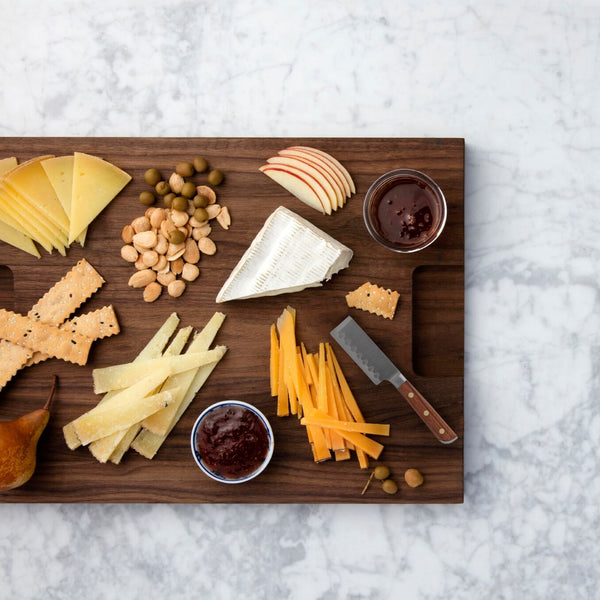
Unlike hot appetizers or an elaborate dessert, a beautiful cheese spread is simple to prepare and satisfying to master. Yet even if it requires no cooking, there's a bit of technique to getting it right. Below, we answer all your cheese board questions.
How many cheeses should I buy?
The general rule is to buy enough types of cheese to allow for a range of textures (firm, semi-firm, soft) and types of milk (cow, goat, sheep or blends). More than five cheeses will likely look cluttered, while less than three tends to look sparse.
What types of cheese should I choose?
If there is a quality shop nearby, we recommend asking your cheesemonger for his or her top picks. But regardless of where you shop, opt for variety. For example, you might choose a firm block of Manchego, a soft bûcheron of goat’s cheese and a semi-firm block of Gruyère. If you’re visually inclined, choosing a blue or a washed rind cheese can provide aesthetic variety as well.
How should I present the cheese?
All cheeses should be served at room temperature, so take them out of the refrigerator an hour before serving. (Note: keep them wrapped in their original packaging until just before arranging your board.) For firm cheeses, it’s less messy if you pre-cut a small pile of thin pieces, while runny cheeses should be left whole for guests to cut themselves.
What should I serve with cheese?
Ideally, you want to have something crunchy, like bread or crackers. Honey, jam and preserves can also complement the salty aspects of cheese, while pickles and olives balance out the fatty nature of richer rounds. Dried and fresh fruits, as well as nuts, are also a classic way to add color and flavor to your spread.



